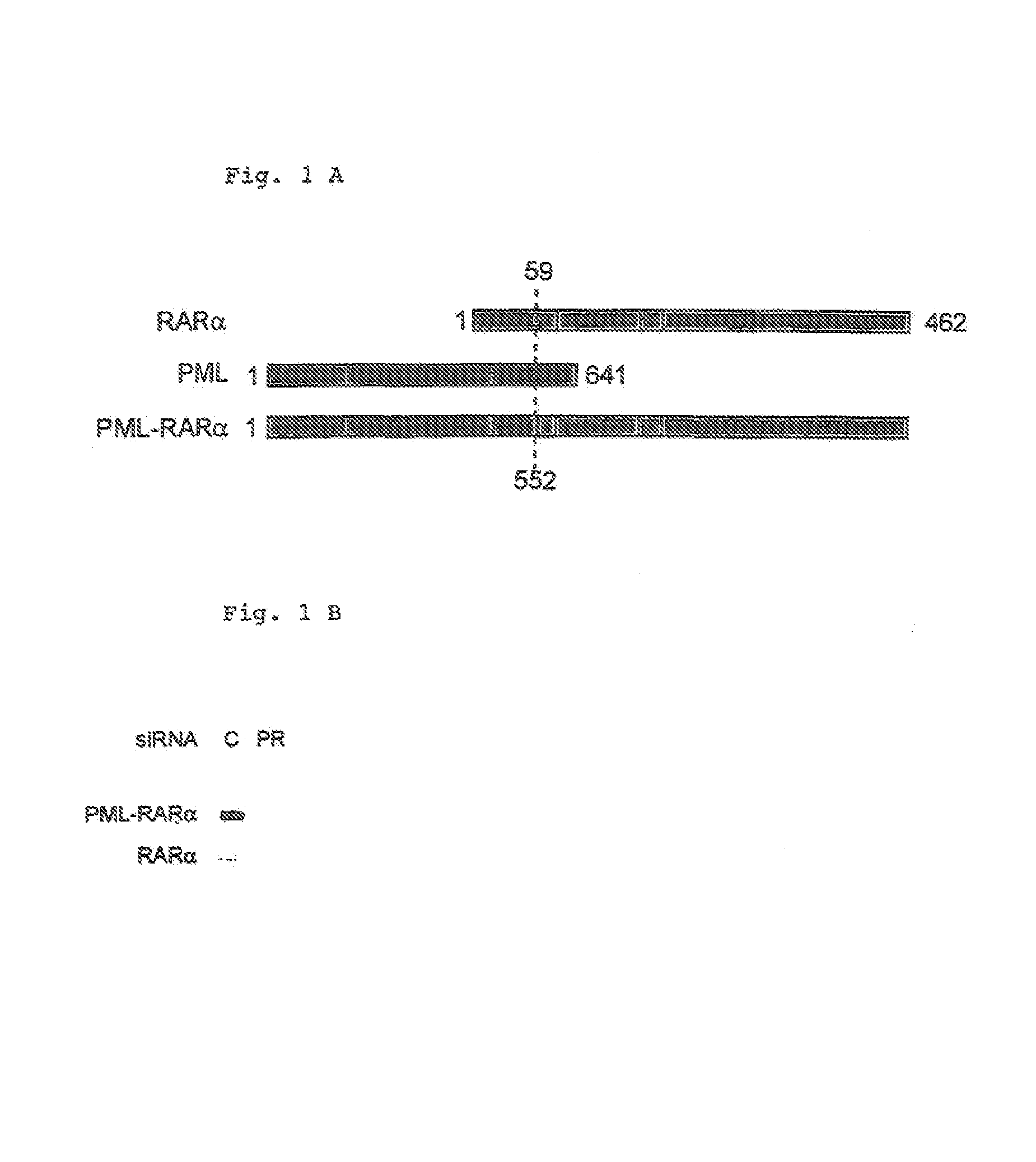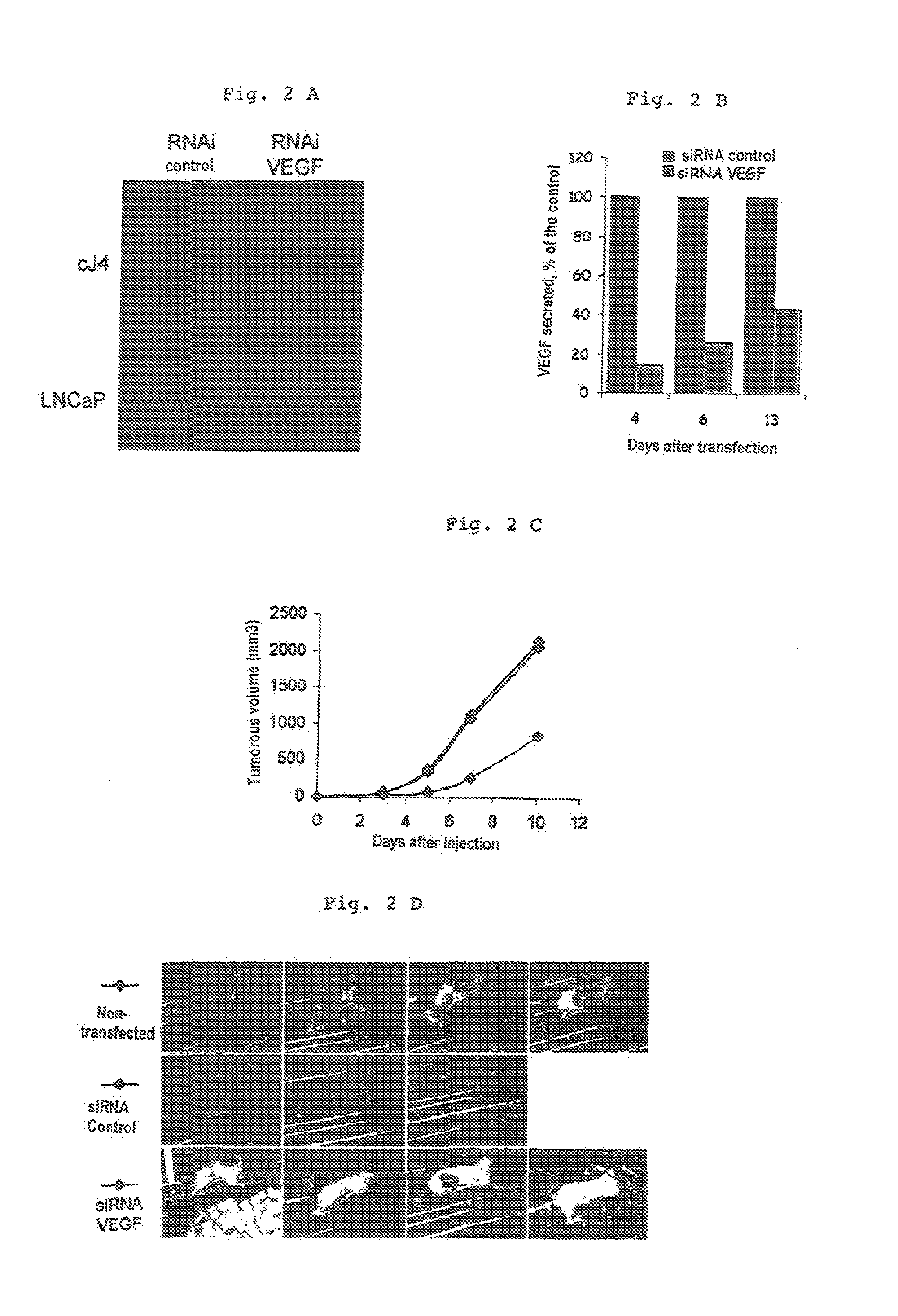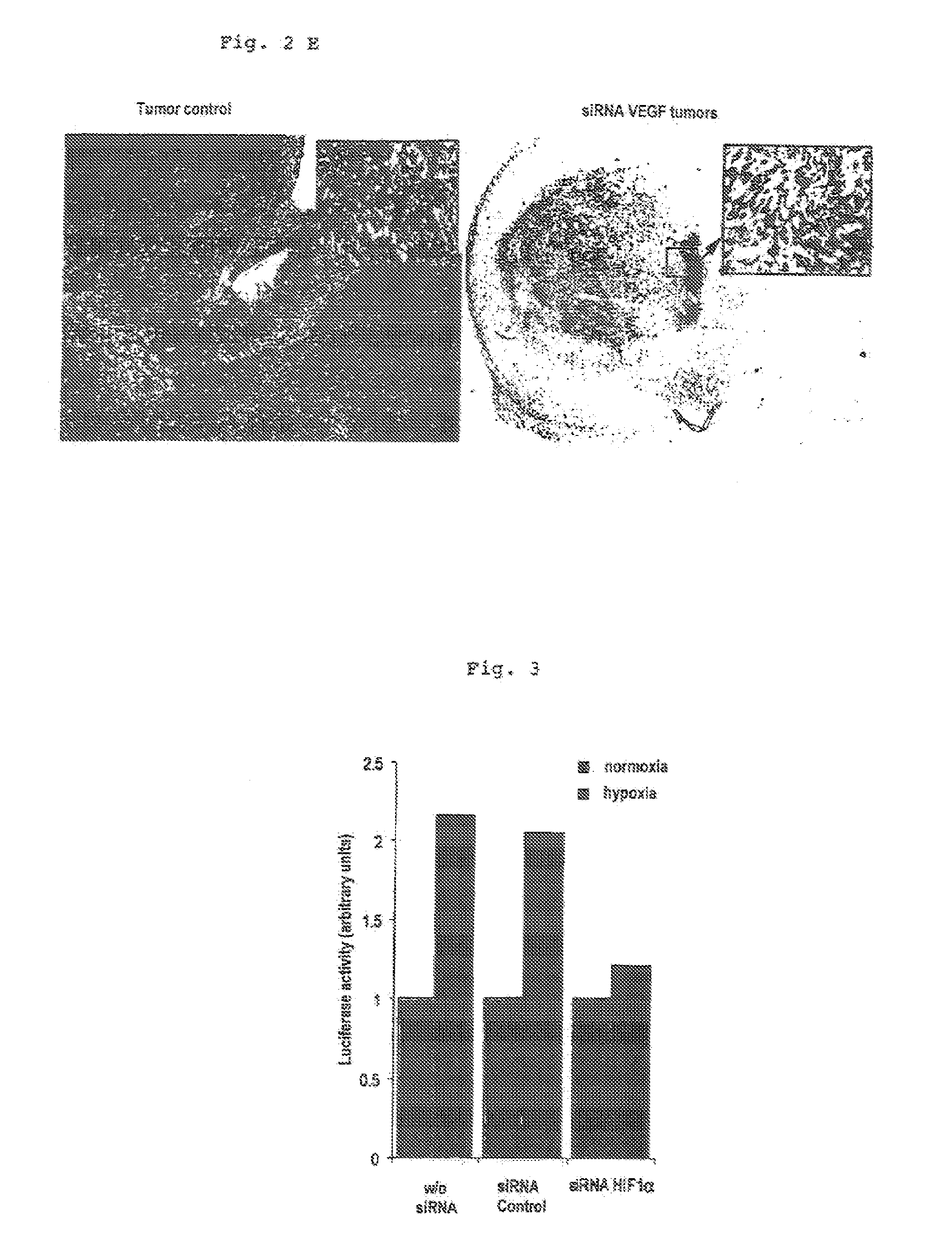Inhibitor oligonucleotides and their use for specific repression of a gene
a technology of inhibitor oligonucleotides and specific repression, which is applied in the field of gene investigation and treatment of human pathologies, can solve problems such as ineffectiveness
- Summary
- Abstract
- Description
- Claims
- Application Information
AI Technical Summary
Benefits of technology
Problems solved by technology
Method used
Image
Examples
example 1
Inhibition of the Protein PML-RARα Associated with Acute Promyelocytic Leukemia (APL)
[0134]I—Introduction
[0135]Acute promyelocytic leukemia (APL) is due to the translocation t(15 ;17) on chromosome 15. In patients afflicted with APL, the receptor of retinoic acid (RARα) is fused to the protein PML (promyelocytic leukemia protein) thereby generating the fusion protein PML-RARα. Five fusion proteins bringing RARα into play have been identified to date. All of these leukemia types implicate the RARα receptor and are clinically similar, which suggests that the rupture of the transduction pathway of retinoic acid is crucial in the pathogenesis of APL leukemia.
[0136]The fusion protein PML-RARα retained the binding domains of the DNA and retinoic acid of the RARα. It has been shown that the fusion protein PML-RARα represses the expression of the target genes of retinoic acid and thereby also blocks the differentiation of the promyelocytic cells. Only the administration of pharmacological d...
example 2
Inhibition of Tumoral Angiogenesis by VEGF
[0149]I—Introduction
[0150]VEGF (vascular endothelial growth factor) is one of the most powerful angiogenic factors identified. These factors are overexpressed in numerous situations of pathological hypervascularization and notably in tumoral development. The inhibition of this angiogenesis enables blocking of tumor growth. The method has the goal of inhibiting tumoral angiogenesis by blocking the expression of one of these angiogenic factors, and as seen in this example, that of VEGF by the tumor cells.
[0151]II—Preparation and Administration of the Oligonucleotides
[0152]Two RNA oligonucleotides, complementary of a region of the coding sequence of human VEGF, conserved in the rat and the mice, were synthesized. Two deoxynucleotides (TT) were added at 3′:[0153]Sequence of the RNAi VEGF:
[0154]
(SEQ ID NO.7)5′[AUGUGAAUGCAGACCAAAGAA]RNA-TT[DNA](SEQ ID NO.8)5′[UUCUUUGGUCUGCAUUCACAU]RNA-TT[DNA][0155]Sequence of the control RNAi:
[0156]
(SEQ ID NO.9)5′...
example 3
Inhibition of the Hypoxic Reaction
[0165]I—Introduction
[0166]Certain tumors are capable of developing under strongly anoxic conditions. This is seen very frequently in tumors of regions that are very poorly vascularized. This weak sensitivity to hypoxia has two consequences: on the one hand, an antiangiogenic treatment has little chance of being effective on these tumors or these tumor subpopulations. On the other end, this weak vascularization makes it difficult to deliver the therapeutic molecules. The transcription factor Hif1α regulates the activity of more than 100 genes enabling the hypoxic response. The inhibition of this transcription factor in hypoxic tumors has the goal of blocking their growth.
[0167]II—Preparation of the Oligonucleotides[0168]RNAi Hif1α
[0169]
(SEQ ID NO. 11)5′[CAUGUGACCAUGAGGAAAUGA]RNA-TT[DNA](SEQ ID NO. 12)5′[UCAUUUCCUCAUGGUCACAUG]RNA-TT[DNA][0170]Control RNAi
[0171]
(SEQ ID NO. 13)5′[GAUAGCAAUGACGAAUGCGUA]RNA-TT[DNA](SEQ ID NO. 14)5′[UACGCAUUCGUCAUUGCUAUC]R...
PUM
| Property | Measurement | Unit |
|---|---|---|
| diameter | aaaaa | aaaaa |
| volume | aaaaa | aaaaa |
| volume | aaaaa | aaaaa |
Abstract
Description
Claims
Application Information
 Login to View More
Login to View More - R&D
- Intellectual Property
- Life Sciences
- Materials
- Tech Scout
- Unparalleled Data Quality
- Higher Quality Content
- 60% Fewer Hallucinations
Browse by: Latest US Patents, China's latest patents, Technical Efficacy Thesaurus, Application Domain, Technology Topic, Popular Technical Reports.
© 2025 PatSnap. All rights reserved.Legal|Privacy policy|Modern Slavery Act Transparency Statement|Sitemap|About US| Contact US: help@patsnap.com



